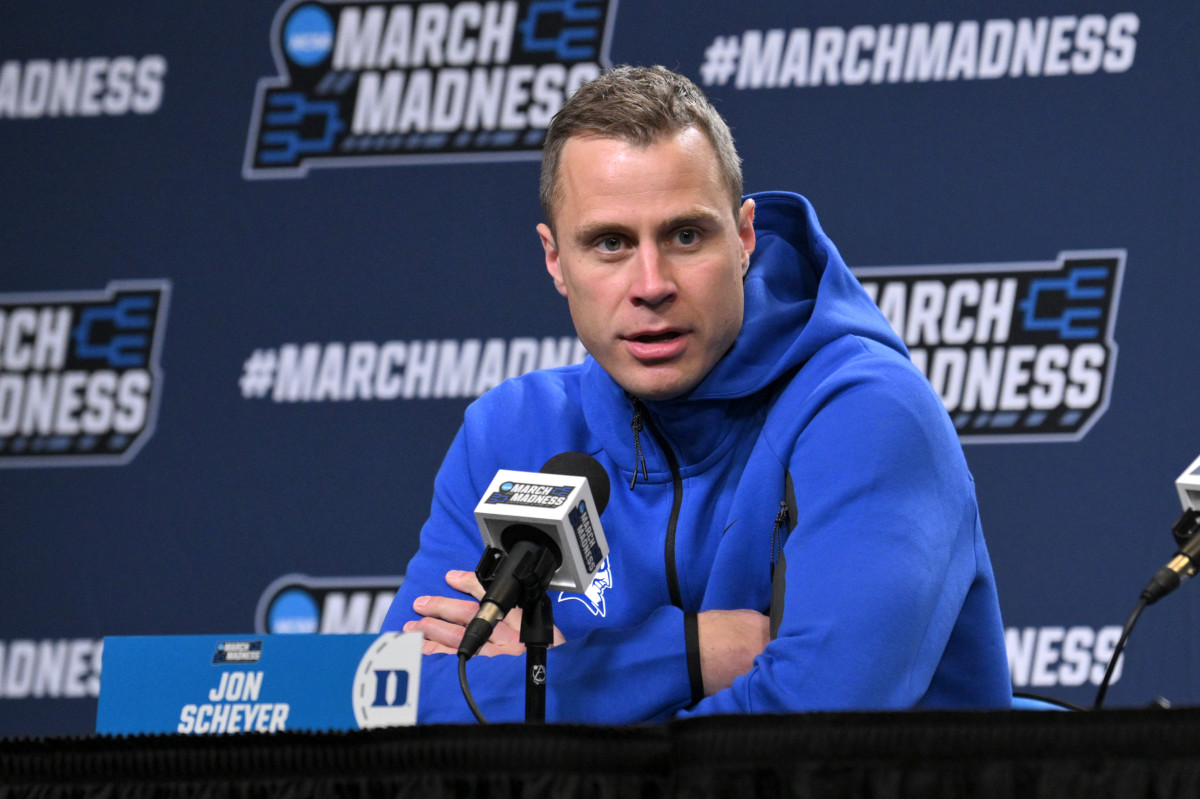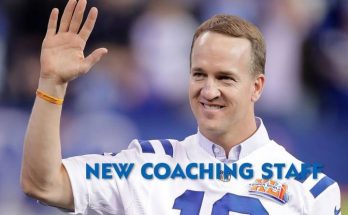Duke University has never shied away from making calculated decisions to preserve the integrity, prestige, and dominance of its athletic programs—particularly in basketball. But in a surprising and resolute move, the Blue Devils have just made a coaching change that has sent shockwaves throughout the college sports landscape, reaffirming that excellence in Durham is not merely expected—it’s demanded.
When the university confirmed the coaching move, it was not just about Xs and Os. It was a message. A message to fans, players, rivals, and the college basketball world at large: Duke does not settle. Mediocrity, inconsistency, or even the perception of underperformance won’t be tolerated—not at a school that’s home to five national championships, a Hall of Fame legacy, and a fanbase that expects greatness every time the ball is tipped.
The decision was bold. The kind that divides opinion. But in truth, this is what distinguishes Duke from the rest of the pack. Whether the program is riding high or facing adversity, the leadership within the Blue Devils’ athletic department has consistently proven it’s unafraid to take action. And in this case, that action meant moving on from a coaching situation that, while not disastrous, simply didn’t align with the university’s championship expectations.
For weeks, speculation had swirled. Rumors circulated about internal dissatisfaction, locker room dynamics, and strategic differences between the coaching staff and administration. While the team showed flashes of brilliance and a few marquee victories during the season, it never truly clicked the way a Duke team is supposed to. There were questions about player development. About late-game execution. About how effectively the coach was able to connect with his roster and inspire a consistent, unified effort. Most of all, there was a nagging sense that Duke was playing from behind—not just on the scoreboard, but in terms of identity and momentum.
And at Duke, those kinds of questions are unacceptable for long.
Sources close to the program say the decision to make a change wasn’t rash. It was the result of deep evaluation—of performances on the court, recruiting trends, and even the morale of the program’s inner circle. While the outgoing coach maintained strong support from certain players and assistants, the bigger picture wasn’t matching up with the high standards set by Duke legends past and present. The administration, led by Athletic Director Nina King, determined that staying the course posed a greater risk than pushing the reset button. And so, the Blue Devils did what the great programs do: they adapted, adjusted, and acted decisively.
The timing of the move—so close to key recruiting periods and the transfer portal window—also speaks volumes. Rather than waiting passively or hoping for a turnaround, Duke chose to be proactive. That’s a trait that separates good programs from elite ones. This was not a decision made in fear, but one made in ambition. A championship mindset isn’t content with “almost” or “good enough.” It chases greatness relentlessly, and sometimes that chase requires uncomfortable changes.
Behind the scenes, the administration reportedly began vetting potential successors weeks before the announcement. Conversations with high-level boosters and alumni were conducted with discretion. The university didn’t want leaks, distractions, or speculation affecting the locker room. They wanted to control the message. And when the decision was finally made public, Duke did just that. With clear communication and unified front-office support, they ensured the move wouldn’t fracture the foundation but instead strengthen it.
It’s worth noting the significance of Duke making such a move in today’s college sports climate. With NIL deals and the transfer portal reshaping the recruiting landscape, coaching has never been more complex or more critical. Coaches today aren’t just tacticians—they’re culture builders, motivators, and strategic communicators. They need to understand the business of basketball, the mental health of their athletes, and the expectations of a national brand that demands annual relevance in March. For Duke, staying ahead of the curve means finding a leader who embodies all of these traits—and then some.
Already, speculation is building about who will take the reins. Will it be a former Duke player with deep ties to the program? A seasoned head coach from another blue-blood school? A rising star from the assistant ranks who understands the modern game? Whoever it is, one thing is clear: this hire will be one of the most scrutinized and impactful in recent Duke history. It’s not just about replacing a coach. It’s about setting a tone for the next decade.
Recruits are watching. Fans are watching. Rivals are watching. And Duke knows it.
The players themselves now find themselves at a crossroads. For those who committed under the previous coach, there may be uncertainty about what comes next. But for others, this is an opportunity—a fresh start under new leadership that could unlock their full potential. In the NIL era, retention is just as important as recruitment, and how Duke manages that transition over the next few weeks will be telling. But if history is any indication, the Blue Devils will handle it with the same poise and purpose that’s defined their program for generations.
Reactions from the Duke community have ranged from shock to support. Some fans were hoping to give the coach another year, citing injuries and tough competition as reasons for the uneven performance. Others have applauded the administration for holding the program to its gold standard. One thing everyone agrees on? Duke basketball is too important, too historic, and too iconic to be anything less than elite.
Coaches come and go. Eras rise and fall. But Duke endures.
There’s something about the blue and white, about Cameron Indoor Stadium, about the brotherhood of players past and present, that demands a level of excellence that’s unrivaled in college basketball. This latest coaching move is a reminder of that. It’s not about running a coach out of town. It’s about holding firm to the values that have built the program into a national powerhouse.
Looking ahead, the ripple effects of this decision could shape the entire college basketball landscape. Other programs may be emboldened to make tough calls. Recruits may reevaluate their lists. Transfer prospects will undoubtedly take a long look at Duke, now aware that the school is serious about competing at the highest level—and willing to make the changes necessary to do so.
For now, all eyes turn to the future. Who will lead the Blue Devils into the next chapter? What kind of system will be implemented? How will the new regime balance tradition with innovation? These are the questions that will dominate headlines in the days and weeks to come.
But beyond the uncertainty, there is a message. A bold, undeniable message from Durham to the rest of the country: we will not settle. We will not wait. We will not let this program slip even an inch below the standard that was set by the legends who came before.
This is what great programs do. They make the hard calls. They stand by their vision. They never let short-term comfort get in the way of long-term greatness.
Duke just made a move that could define the next era of its basketball history.
And in doing so, the Blue Devils have sent a statement loud and clear: they are still here, still fighting, still striving for banners, trophies, and moments that define March Madness.
This wasn’t just a coaching change.
It was a declaration.
A declaration that Duke Basketball will always be about more than just winning games—it’s about winning the right way, with the right people, at the right time. It’s about building a legacy that never fades. It’s about chasing banners not out of habit, but out of hunger.
The Blue Devils have made their move.
Now the rest of the college basketball world is on notice.



